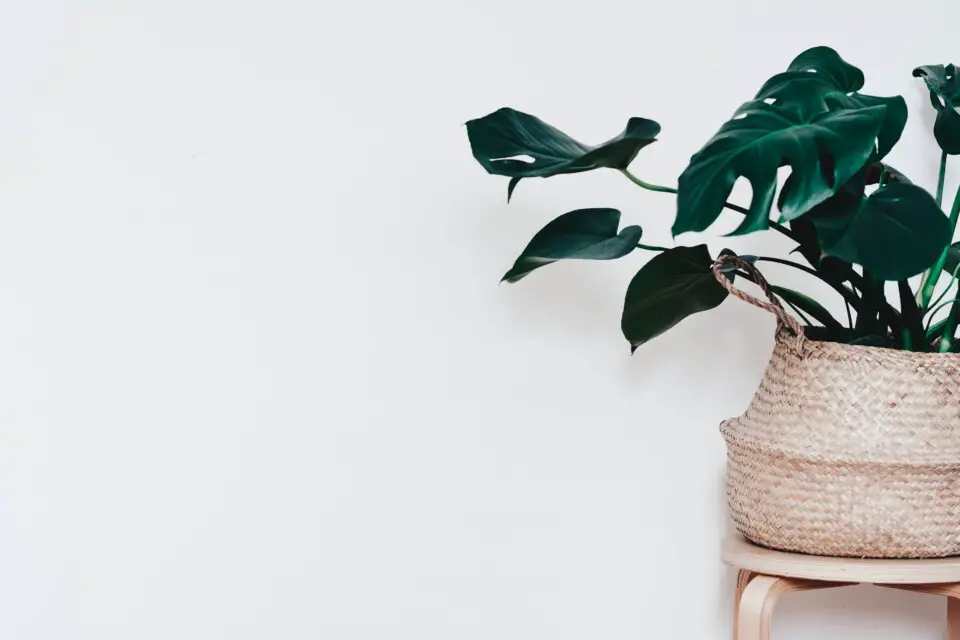Some links in the post are affiliate links and I get a commission from purchases made through some links found in the post.
“It’s curled inwards!” she screamed into the phone, unbelieving that the monstera she had so happily bought was not living up to her expectations.
The new leaf was not hard and magnificent like the others on the plant. I understood how she felt as I had been in her shoes the first time I grew the monstera.
It had taken a while for me to get the hang of things – that monstera leaves would first curl inward before unfurling and hardening.
It was a process, and all I could do was wait. I explained the same to her, advising her to give the plant some time. She called me a few days later, delighted that the plant’s new leaf had unfurled, and even sent me a picture.
Usually, patience is all it takes for your monstera leaves to unfurl and harden. But sometimes, even after weeks of waiting, the leaf still does not harden.
Even worse, it may start showing signs of browning. Why does this happen, and what can you do about it?
The reason your monstera leaves are not hardening could just be due to it’s natural process of the leaf formation which generally takes 1 to 4 weeks.
If after 7 weeks there is no sign of hardening or worse browning, then this could be caused by inadequate humidity, not enough lighting and incorrect temperatures.
Why Are My Monstera Leaves Not Hardening?
I can understand the frustration of waiting for your monstera to develop a new leaf – only for the leaf to remain curled for weeks.
Why does this happen? Sometimes, it’s because of the nature of your monstera species. Some plants generally take longer than others.
If the plant has not shown signs of distress, this is the likely cause. But if the plant starts showing signs like browning, slowed growth, and other adverse changes, you may want to pay particular attention to the following issues:
The Monstera Does Not Have Adequate Access to Humidity
 Monsteras grow in tropical climates where the humidity is on the higher end.
Monsteras grow in tropical climates where the humidity is on the higher end.
The continuous transpiration and evaporation activities in the surrounding plants aid in increasing water vapor which, in turn, enables the monstera not to dry out.
But indoors, the conditions may not be as favorable, necessitating you to step in and alter the conditions.
The humidity range should be from 70% to 80%. The plant can still do well with 50% humidity, but anything lower than that would hurt it.
The plant would have crispy leaves that did not open and would appear droopy. You can find out the humidity in your home using a hygrometer. And if it’s wanting, you can alter it by:
- Installing a humidifier near the plant,
- Leaving the monstera in the bathroom, kitchen, or other spaces with high humidity,
- Placing a bowl of water near the plant,
- Misting the monstera, and
- Grouping it with other plants.
Also, move the plant away from windows or doors so that the cold drafts do not wick away its moisture content.
The Monstera Does Not Have Enough Light Exposure
In the wild, the monstera grows in canopies with adequate access to dappled or filtered light. It uses the energy from this light to make food which gives it the energy to produce and unfurl its leaves.
But what happens in the absence of this light? The plant compensates by using whatever energy it has to reach more light.
So, it starts producing elongated stems and may start leaning towards the light. Unfurling takes a back seat, and the plant does what it must do to survive.
How can you tell light is the issue? The plant will generally appear weak despite adequate access to water and nutrients. The monstera may also start producing smaller leaves with no fenestrations.
It may also appear droopy, have yellow leaves, not use up much water in the soil, and may show slowed or no growth.
Can you fix this? Yes, the monstera needs about 10 to 12 hours of bright and indirect light a day which you can achieve by:
- Placing the plant near an east or south-facing window where the plant gets a bit of sun exposure. In the summer, you can move the plant away from the window to prevent direct leaf exposure to the harsh sun rays.
- Supplementing the natural light with artificial lighting using grow lights. LEDs are the best options as they last the longest and have low heat emissions.
Please note that too much light exposure can damage the leaves. Thus, it would be best to balance low and high light exposure.
The Monstera Needs Warmer Temperatures
This factor ties in with the tropical climate in which the monstera grows. When you move the plant indoors, you should ensure the temperatures do not fall below 60 degrees Fahrenheit.
Otherwise, you can trigger plant dormancy, resulting in slower leaf growth and unfurling. Instead, you want to replicate optimal growing conditions by:
- Measuring the temperature around the plant using a thermometer. If they are ideal, another issue is to blame for the lack of your monstera leaves hardening. If they are lower than they should be, you can add a heater to the room.
- Moving the plant away from doors and windows where cold drafts can reach the plant.
- Ensuring the plant’s leaves do not touch the windows or any other cold surfaces in the room.
These easy measures are highly effective in resolving unfurling in monsteras. Try them out and see how it goes.
You may also like: How to care for a monstera
How Long Does It Take for Monstera Leaves to Harden?
I’d like to shorten your waiting time by giving you a number. But sadly, I cannot do this. Your monstera will unfurl its leaves and begin hardening them when it is in the right conditions.
The better the conditions, the faster the leaf will harden, and the sooner you can enjoy the fruits of your hard work. But if the conditions are not ideal, it could be over a month before the leaf hardens.
Generally, you will wait about 1 to 4 weeks for each new leaf to develop and harden. But where the conditions are poor, you could wait up to 7 weeks.
So, the best answer to this question directly relates to whether your plant is facing any of the issues I covered earlier.
How Do You Harden a Monstera’s Leaves?
 We’re so used to stepping in when our plants are not doing well that it might seem like the logical approach to this problem – pry the leaf open! But that would be a terrible move.
We’re so used to stepping in when our plants are not doing well that it might seem like the logical approach to this problem – pry the leaf open! But that would be a terrible move.
The curled leaf is very delicate as it has not matured enough to the point of unfurling. So, handling it even in the slightest bit could damage it. The best thing to do is:
- Ensure the monstera has adequate access to heat. Keep the temperature in the 70-degree range. You can move your plant to a warmer location or add a heating device near the plant. Ensure that the monstera does not get any direct cold or hot drafts as these can harm it.
- Keep the plant in a spot with bright and indirect light. If you cannot find a site with such light in your home, you can invest in a grow light for a similar effect.
- Increase the humidity around the plant to maintain its optimal transpiration and evaporation rates.
That’s all you can do to help your plant harden its leaves faster.
Final Thoughts
In most cases, your monstera requires you to be patient, and it will harden its leaves in due time. But it never hurts to play it safe by incorporating some of the measures covered in this guide.
Happy Gardening!


